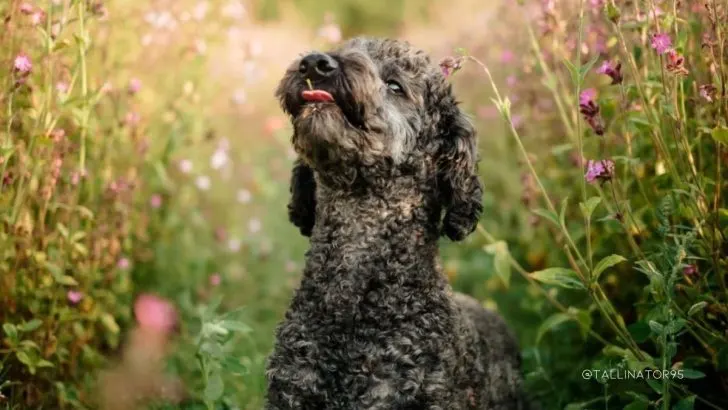With the diverse range of Poodle colors, we can see this dog breed in many different shades of colors and patterns. Being elegant dogs as they are, this dog breed can wear any of these colors with style!
The majority of Poodles you will see are going to be white, black, or creme. Those are the most popular Poodle colors people opt for.
No matter the size of the Poodle—teacup, miniature, standard, or toy—this dog breed can come in many different colors.
However, not all Poodle colors are recognized by the American Kennel Club as the standard colors they come in. Some colorings are prohibited in dog competitions, and some may even carry health issues.
Those are great examples of the need to inform yourself before buying or adopting a Poodle. That is the only way to make the best decision for you and your family and the best way to help somebody else make the right decision.
After learning all of this new information, you might need clarification. But don’t worry—I’ll explain everything in the following paragraphs!
Poodle Colors Recognized By The American Kennel Club (AKC)
This dog is exceptionally clever, energetic, and well-built. It is characteristic for this dog to move soundly and to exude confidence in its appearance.
The Poodle exudes a unique prideful look when trimmed adequately according to the standards, in the traditional manner, and well-groomed.
The standard, when it comes to color, is the same for the toy, miniature, and standard Poodle, but it differs in size since these categories are size-based.
When it comes to standardized general looks, I’ll briefly describe what the dog’s head should look like, with some specific characteristics.
Dark, oval, and spaced sufficiently apart eyes are ideal for forming an alert, perceptive appearance—a significant flaw when eyes are large, round, or extremely bright.
Ears should be positioned at or just below eye level, close to the head. The ear fringe should be manageable, even when the ear leather is broad and wide.
The skull has a distinct, albeit small, stop. It is somewhat rounded, and the muscles and cheekbones are flat. Measures approximately the same as the muzzle’s length from occiput to stop.
These recommendations can help you decide whether the Poodle you are about to buy or adopt is according to the AKC’s standards.
Apricot Poodles
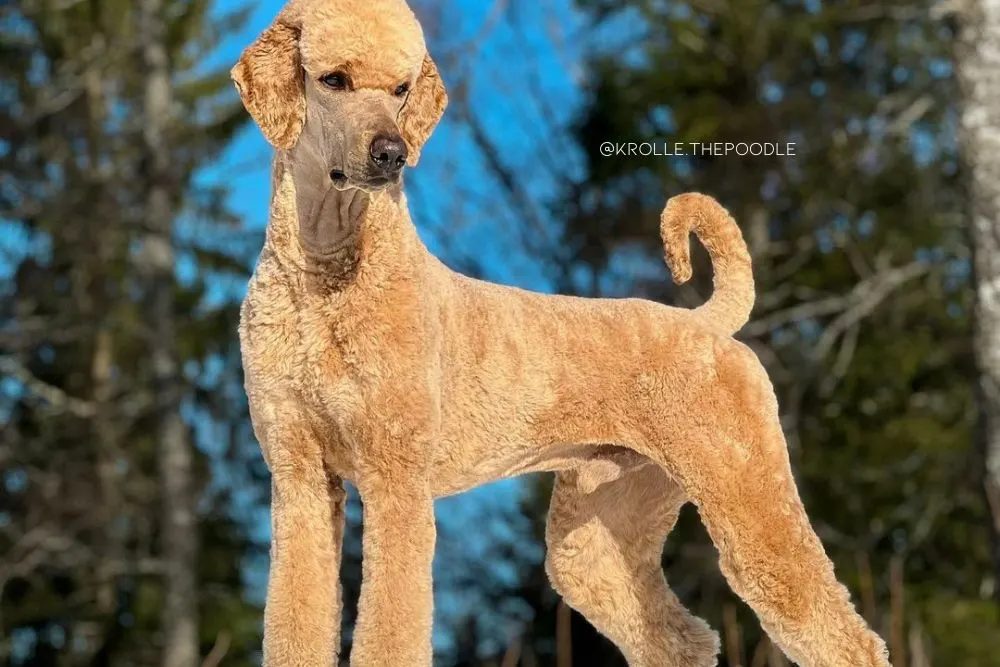
Under registration code 002 at the AKC, the apricot color in poodles is somewhat darker than in cream Poodles. Distinguishing apricots from creams can be challenging for those new to this.
Compared to the ‘cream’ color mentioned above, apricots are typically more intense, almost orange. Although nose color varies, ears are often darker than the torso. As they mature and fade, many apricots become cream in color.
Like red, apricot is a very recent color for Poodles—it was only included in the breed standard not too long ago. The red with which they are born typically fades to a lighter shade.
In 1898 the first Standard Poodle with an apricot coloration was born, although it was first classified as a liver breed. Since then, apricot Poodles have remained popular and have taken home numerous honors.
Cream Poodles
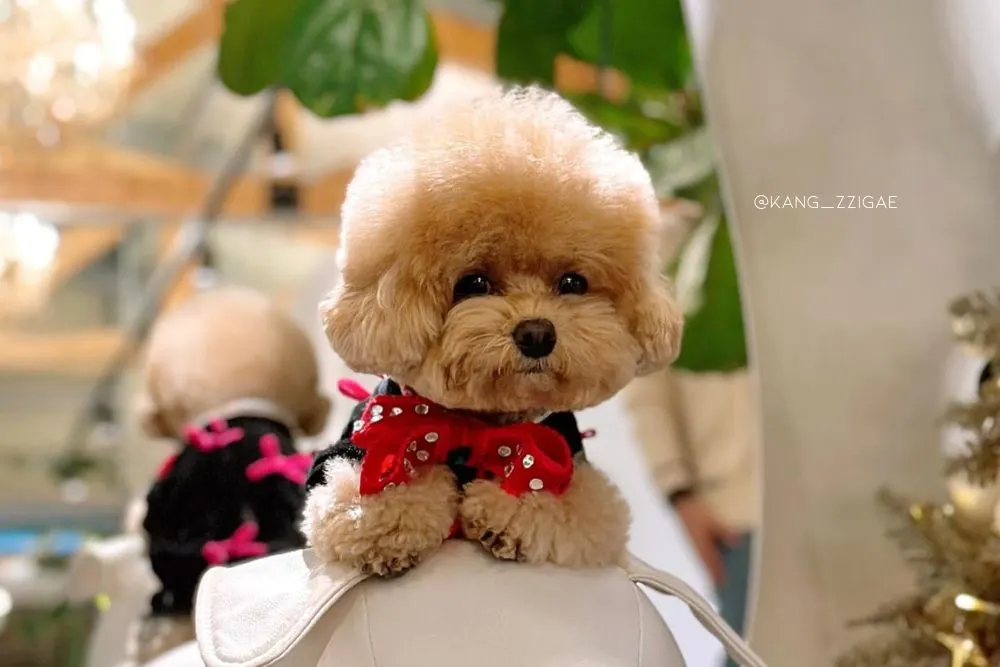
Cream-colored Poodles, registered under the AKC’s registration code 076, are lighter in color than Apricots. Depending on their color ancestry and the intensity of their color genes, many creams turn white as they age. However, the colors of their noses differ.
Differentiating between the various off-white cream colors present in Poodles of all sizes can be difficult. However, a cream Poodle is one of the rare light-colored Poodles with a black nose instead of a liver-colored one, so it may be easily recognized.
It is more challenging to determine if a Poodle is white or cream because they both have black points, and a pale cream can appear white under certain lighting conditions.
The two are dissimilar to a trained eye, so experts will undoubtedly write off this error. White denotes total colorlessness; however, the cream is a very pale brown that resembles an apricot.
A lot of Cream puppies are light to medium brown at birth, becoming clear as they get older.
Blue Poodles
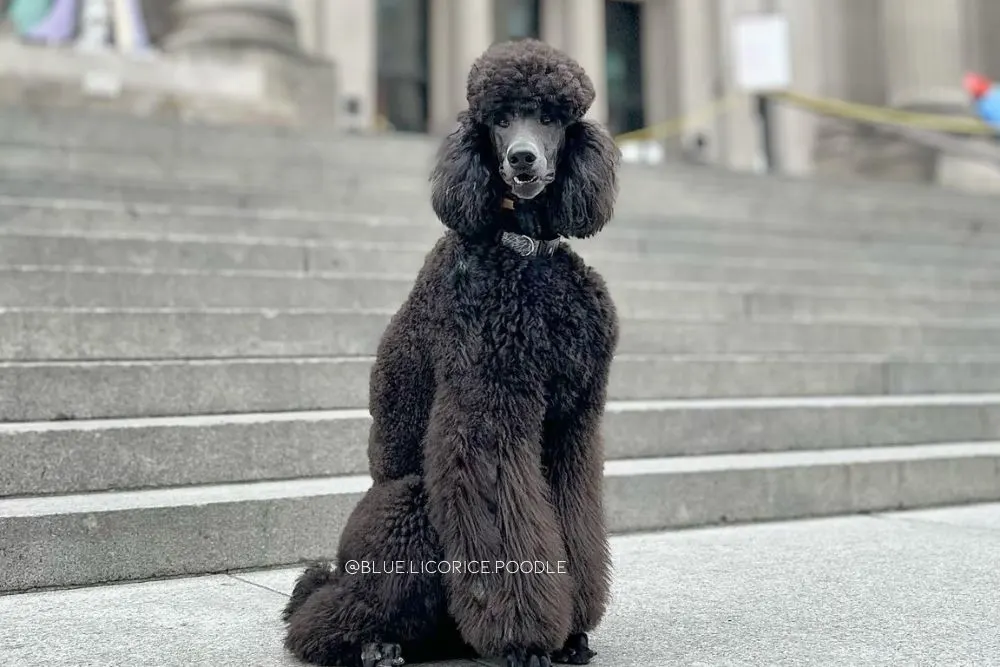
These Poodles stand under the AKC’s registration code 037.
Due to the way they seem when they are initially born, blue Poodles are sometimes registered as black. Some can take up to a year for their coats to start turning blue, while others may retain their black puppy coats for up to 24 months.
Breeders with experience may quickly identify a blue puppy from a group of black siblings by looking at the brown hue on the dog’s coat. If you quickly examine their paws, you can find some white or silver or white hairs in between the pads.
A blue Poodle puppy’s color clears and almost turns a metal greyish color as it gets older. While some coloring is permitted in blue Poodles, they should adhere to the breed standard by having black noses, dark eyes, and black toenails, just like black Poodles do.
Blue, like all color variations, does not affect the health or personality of the dog. It is a recognized Poodle hue and is “naturally harsh” as opposed to cottony, like silver Poodles.
Brown Poodles
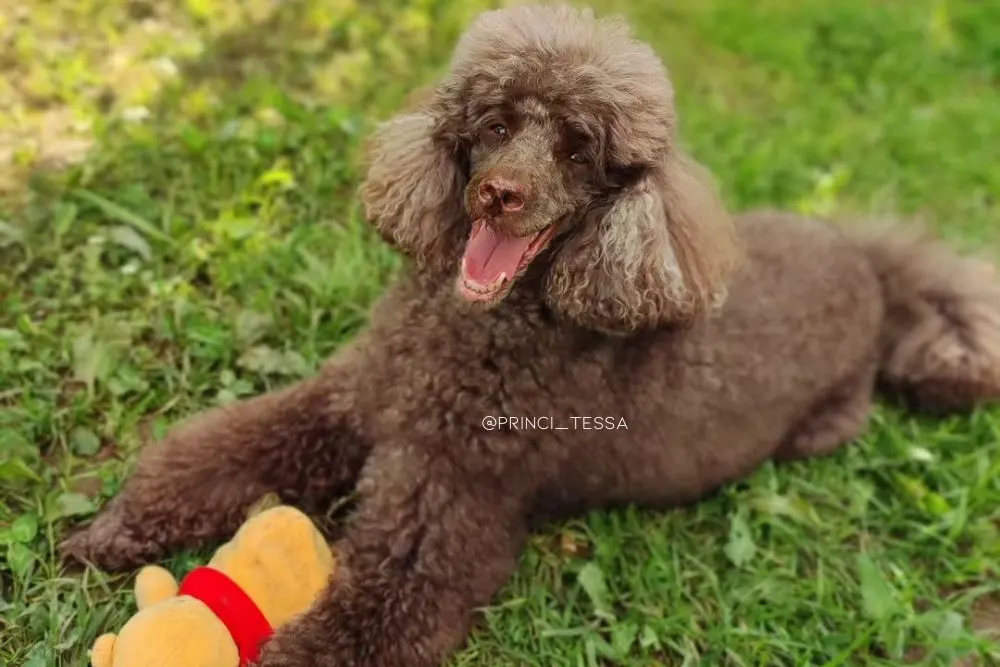
Brown poodles, which stand under the AKC’s registration code 061, once mixed up with red poodles, should preferably be deep walnut brown or darker reds mahogany in color rather than chestnut.
However, compared to practically any other color, brown Poodles have more color variations and a broader palette of colors.
Most brown Poodles are dark at birth, but as they age, they lighten to the beautiful colors of coffee and cinnamon brown.
The brown poodle’s propensity for light yellow, almost green-colored eyes is one of its main issues. Although challenging to eliminate via breeding, this is an unwanted trait in the show ring.
You won’t usually encounter a dark chocolate-brown Poodle older than seven because the sun, chlorine, and other environmental variables can bleach the brown Poodle’s coat.
According to breed standards, poodles are the most desired shade of brown. They have dark toenails, liver-colored noses, and amber-colored eyes.
Black Poodles
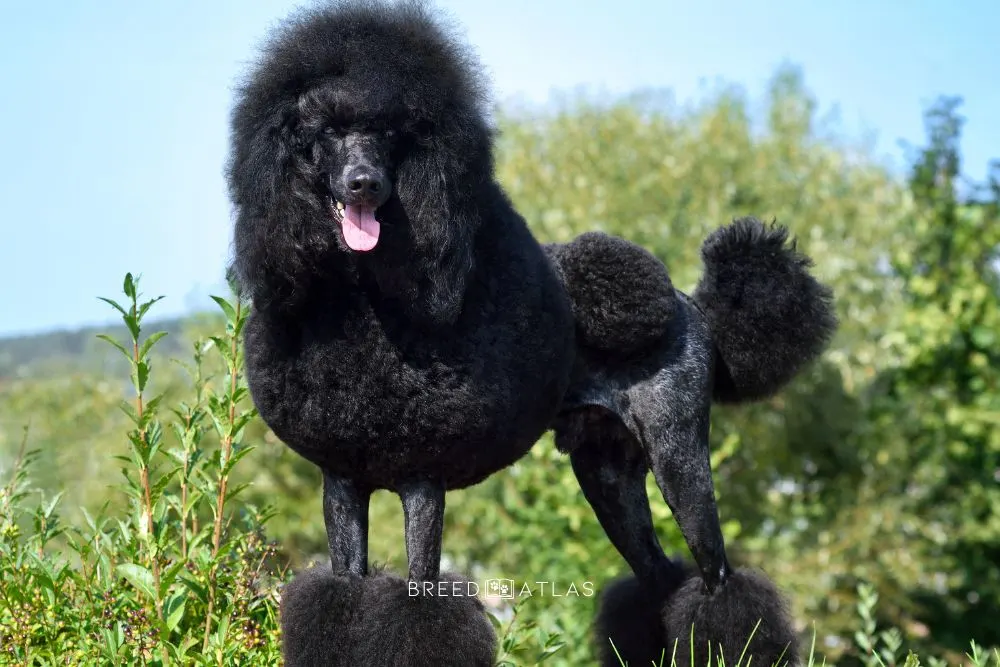
Among the 11 colors of Poodles accepted by the American Kennel Club (AKC), black is one of the most popular. It stands under the AKC’s registration code 007. Quite suitable for a black dog, huh?
A black Poodle should have no visible tinting, be inky black or black paint solidness of color, and be free of any white or silver guard hairs. These Poodles should stay true black far into old age rather than fade as they mature.
A black Poodle should have “black noses, eye-rims and lips, black or self-colored toenails and very dark eyes,” in addition to his solid, black coat, according to the AKC breed standard.
“Clearing” is when a Poodle’s color lightens or fades; some black Poodle puppies will clear during a year or two, turning silver or blue. Here, color pedigree plays a significant role.
Poodles of any color are equally clever, although black Poodles are sometimes passed over in preference for lighter-colored puppies or rescues.
However, research has shown that Poodles with darker colors, such as black, are more likely than dogs with lighter colors to develop squamous cell carcinoma of the digit (SCDD). This represents a small health disparity.
Red Poodles
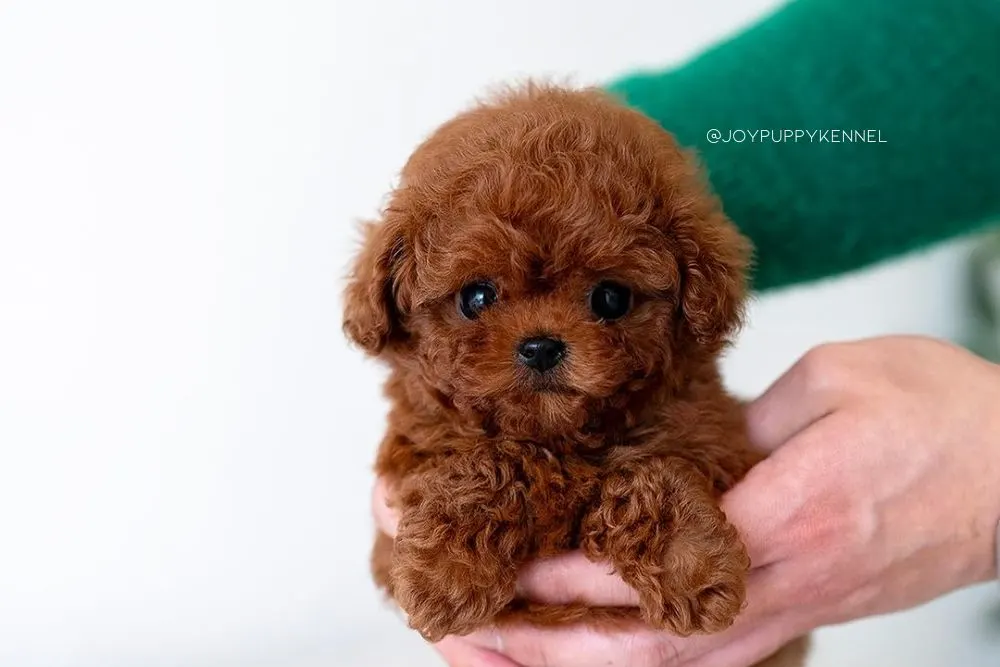
Red Poodles were regarded as brown until 1980, but since then, they have distinguished themselves from their peers with their chestnut, auburn, and copper colors. They stand under the AKC’s registration code 140.
It is now thought that the red Poodle, although not recognized as a distinct breed until later, possesses a special gene that darkens the more typical apricot color.
This gene is frequently referred to as the Rufus gene. The limited number of red Poodles may be explained since Rufus is a recessive gene or a recessive trait.
There’s no assurance that the puppy will grow up to be the same shade of red, no matter what hue he is. Red poodles are particularly vulnerable to color changes as they age, with some fading and others darkening in hue.
Silver Poodles

Similar to blue Poodles, silver Poodles are born black but will begin to lighten up much earlier. They are a diluted version of the black Poodle. They stand under the AKC’s registration code 176.
Silver tones will start to show on the face and paws around the time they are six weeks old, and over about a year after that, the remainder of the coat will also become silver.
Like the blue Poodle, a silver puppy would typically appear all black except for a “frosting of white on the underpads of the feet.”
Since silver is a recessive color, it is more challenging to breed for, and the only way to truly guarantee silver babies is if both parents are silver Poodles.
It’s been hypothesized that Miniature Poodles carried the gene for their Toy cousins’ silver coloring after they were the first to exhibit it.
Breeding silver poodles can be challenging, particularly if you want an almost platinum color.
Silver Beige Poodles
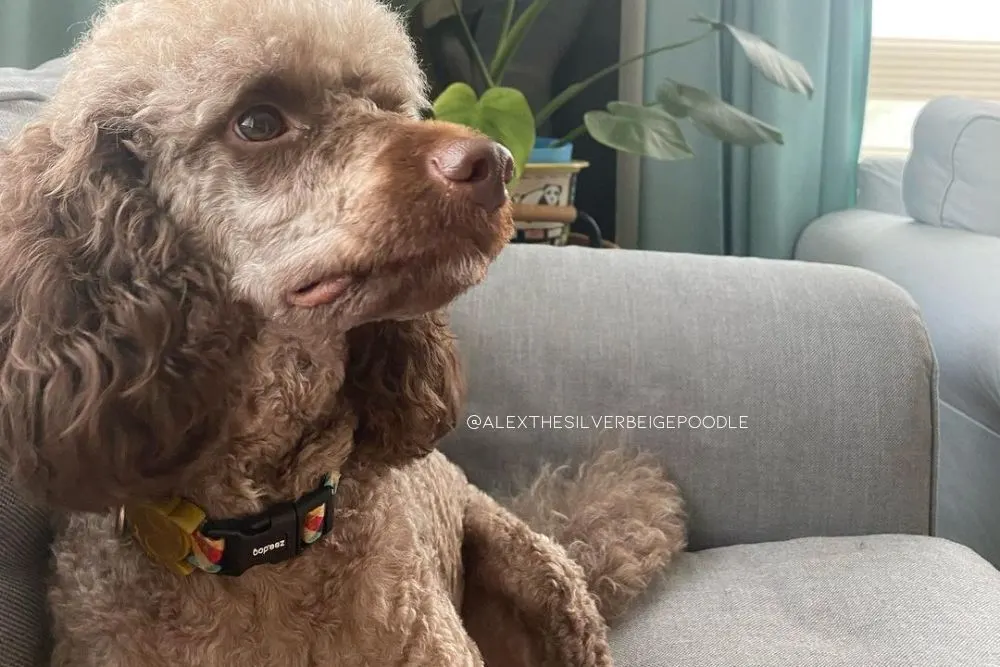
The Silver Beige Poodles stand under the registration code 183.
Most silver beige Poodles arrive in the world brown, but within the first six weeks of life, the brown around their face and paws clear up, unlike café au lait, which is a stronger shade of brown.
Although there is often confusion between silver beige and café au lait, the former is far more popular. Ideally, you would need to know the puppy’s original color from birth to distinguish between them.
While pups born in the café au lait are often that color, silver beige Poodles are brown at birth, then turn silver beige as they age.
White Poodles
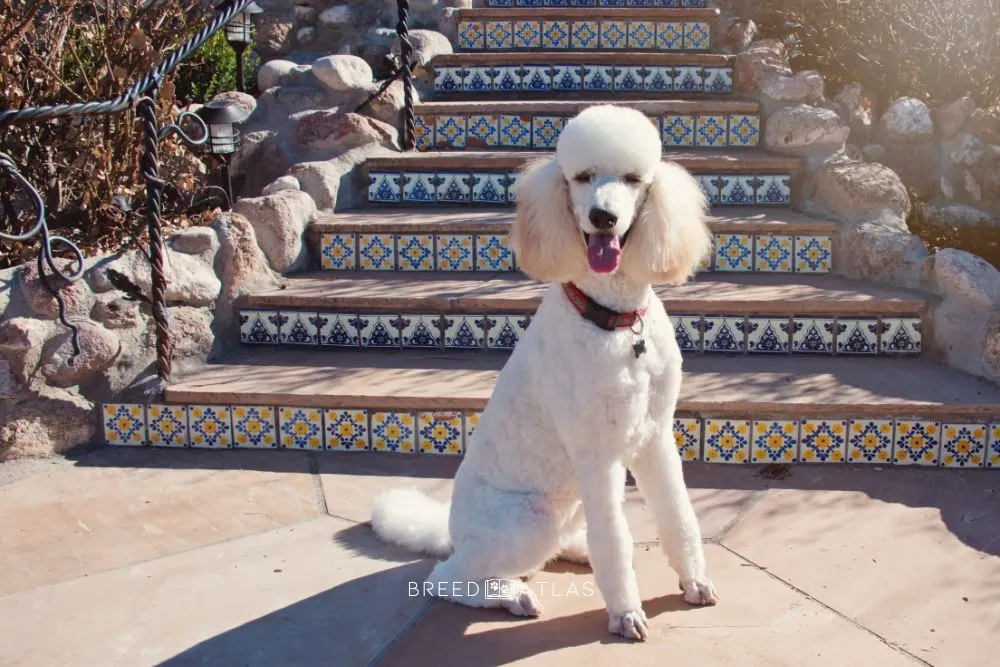
One of the most frequent and well-liked colors for Poodles is white. They stand under the AKC’s registration code 199.
However, a true white Poodle and an albino are not the same thing; the white Poodle has black skin, while the albino’s skin is pink.
A white Poodle has dark eyes and black nose colors, nails, and eye rims, giving it a stunning appearance even though it is white. It also belongs to the black hair type.
A white Poodle with pink toenails or a pink skin patch would have been successful in the show ring in the past, but the AKC now only accepts white Poodles with black extremities.
The styles of white Poodles are comparable to those of other colors, and some breeders and owners like the softer, more cottony coat of white poodles to the rough texture of different colors, including cream.
Frequent washings with a Poodle-specific shampoo are required for this color to stay fresh and clean.
There is a belief that white dogs are generally more prone to deafness and blindness. This is not the case with the standard Poodle. That stays as a belief carried by albino dogs. Albino Poodles and White Poodles are not the same!
Cafe Au Lait Poodles

Cafe Au Lait Poodle stands under the AKC’s registration code 069. This is one of my favorite color names!d
To be distinguished from the cream Poodle, a cafe au lait colored poodle should have a hint of tan to his coat, amber eyes, and a liver point.
The true color of the cafe au lait poodle is more akin to silver than red, even though they may appear similar to red ones.
Though it is regarded as an official color, it is not well-liked and is often criticized for being an inferior shade of brown.
Gray Poodles
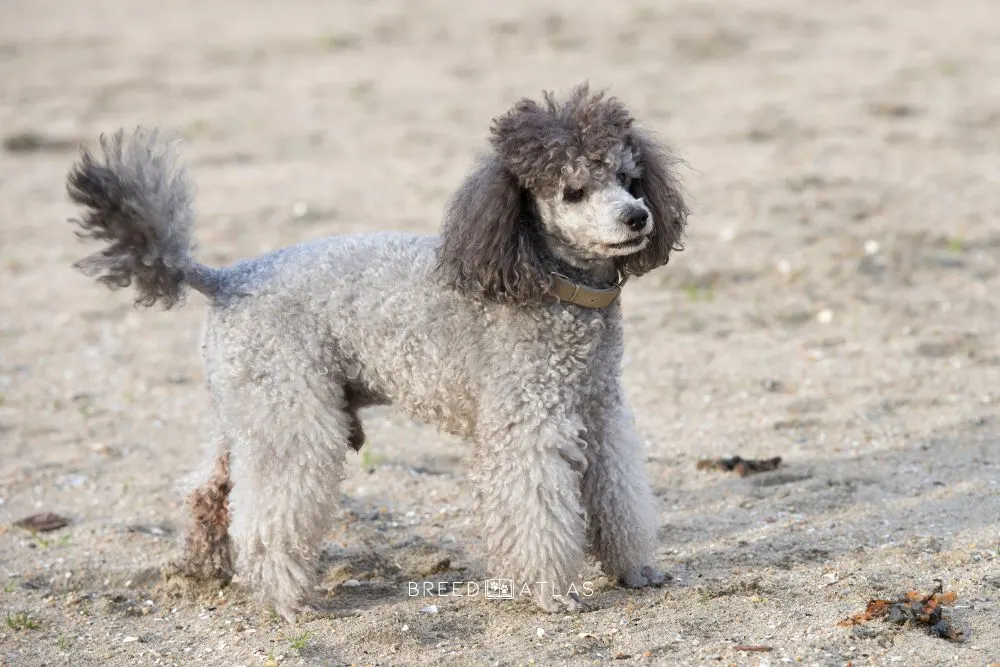
Gray Poodles stand under the AKC’s registration code 100.
Certain Poodles get gray as they age, just like people. Some black, blue, and brown Poodles carry the Progressive Graying gene, which causes this process.
With a dominant mutation, there is a 50% probability that puppies will become gray if their parents exhibit aging tendencies.
While some silver Poodles are dark grey from birth and never change, others will show signs of color shift when around two or three months old and will eventually get lighter as they age.
The AKC recognizes gray coats regardless of how they are made. Gray pups should have dark eyes and black noses, like black, blue, and silver Poodles.
Poodle Colors That Are Not Considered Standard
Just as we discussed these Poodle colors according to the breed’s standard, there are also some colors and color combinations that are not ‘approved’ for dog shows or conformation shows.
Ticking is the term for small white dots or flecks that specific poodles have in their coat. A specific gene causes this, and pure white Poodles that carry the ticking gene will even look dirty.
Identifying a Poodle puppy’s spots can be challenging because they are more of a marking than a color in and of themselves. Ticking is more common on parts-Poodles than solid colors, and as the puppy gets older, it’s more noticeable.
Although the American Kennel Club (AKC) disqualifies Poodles who exhibit ticking from conformation classes, the United Kennel Club considers it acceptable.
Non-standardized colors are black and cream, black and gray, black and silver, black and white, blue and white, brown and apricot, brown and white, black and apricot, cream and white, black and brown, gray and white, red and apricot, red and white, white and apricot, white and silver.
Many colors are thought to be fading hues, meaning they inherently carry the fading gene. Consider this when considering your breeding program.
All colors other than black are regarded as fading colors. This indicates that the colors blue, silver, brown, coffee au lait, silver beige, red, apricot, cream, and white are all fading.
This is relevant when discussing multicolors and color combinations of the colors as mentioned earlier. It’s pretty safe to assume that a Sable puppy will always have the fading gene so its color will change from birth.
Multi-colored Poodles
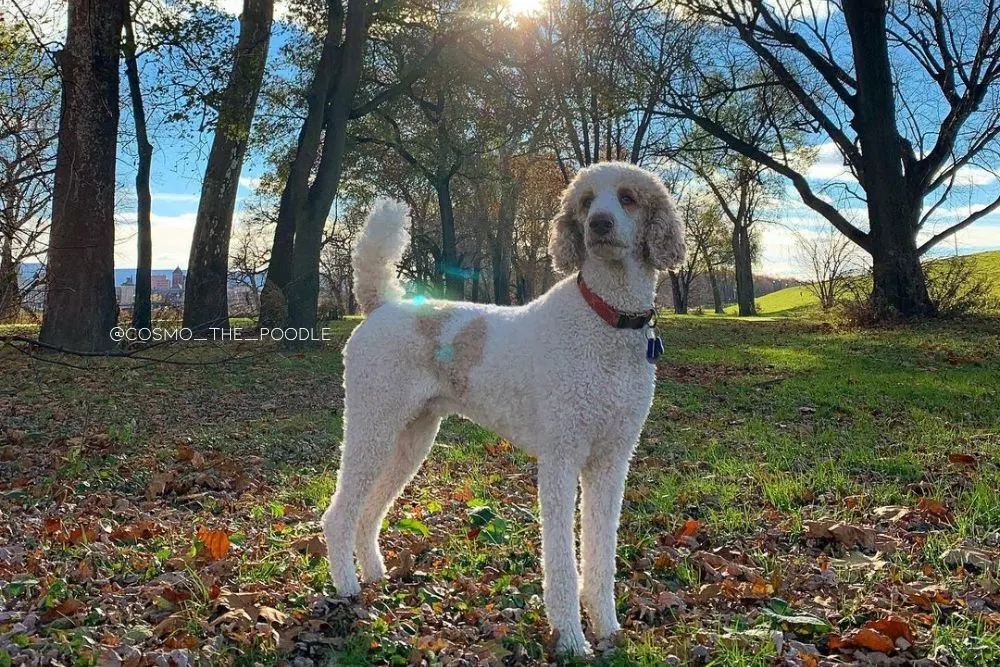
Did you know that Poodles were once multicolored?
Over the years, people have attempted to breed multicolored poodles into plain-colored ones. However, multicolors have returned during the last few decades and are now more stunning than before!
You can own a purebred poodle pedigree and DNA and a poodle of multiple colors.
Let’s go over some of the most beautiful multi-colored Poodles!
If you happen to be in California, and searching for a Poodle to adopt, check out these Poodle rescues in Cali!
Brindle Poodle
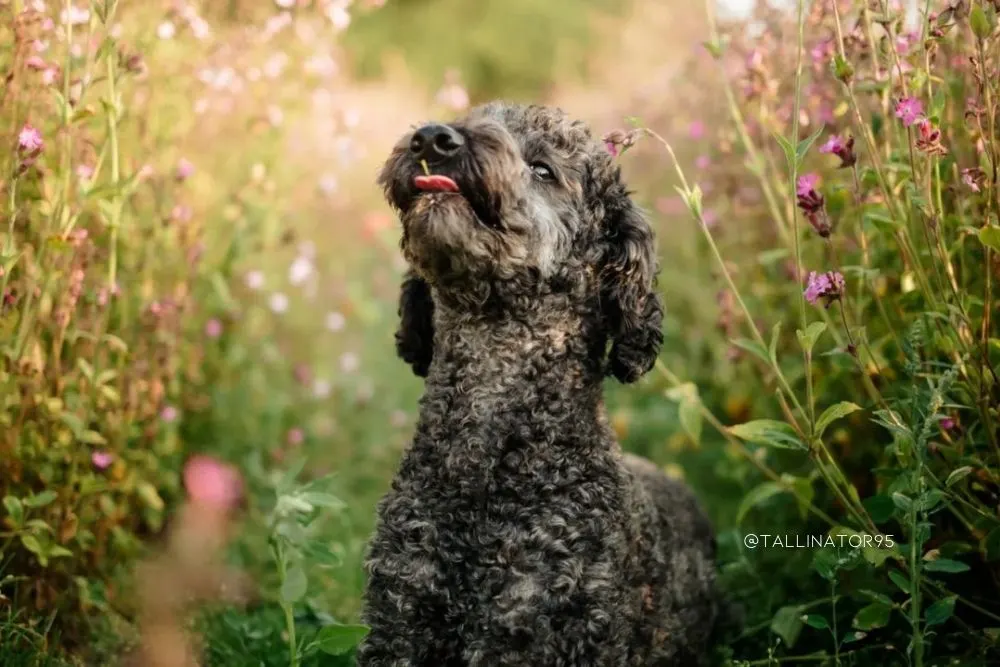
In many dog breeds, brindles are a fairly common pattern, especially in ‘bulldog dogs’ and in Danes, Boxers, Mastiffs, etc.
Although brindle can be any color or shade, its distinctive tiger stripes define it as brindle. Genetically speaking, brindle is the result of the creation of at least two recessive genes.
This indicates that it’s uncommon and typically requires both parents to have it in their hue or closely related to it in their family tree. Remember that puppies might not receive this color even if the above is accurate.
Some experts are advocating for the possibility of the brindle gene being ‘imported’ to Poodles through other dog breeds that have this color pattern.
Of course, you can do genetic testing to prove that your Poodle is 100% Poodle, but we must remember that every dog breed and every color of those dog breeds started somewhere.
There was much change that happened from the gray wolf til today.
Sable Poodle
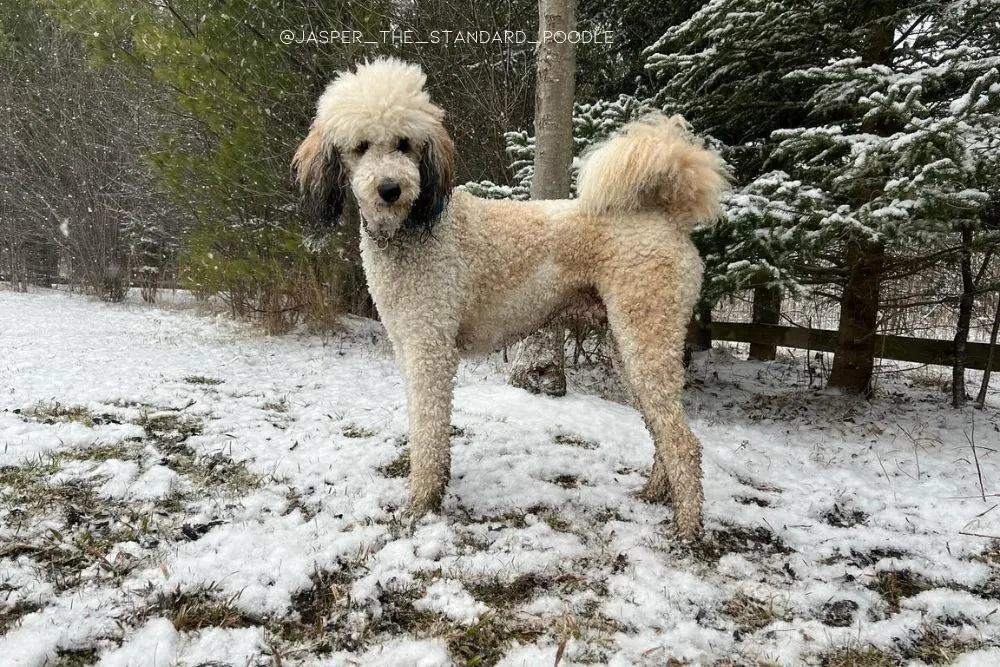
Other popular colors in dog breeds, such as the ‘Shepherd Family’ are sable. Sable is best described as a “burnt toast color,” often brown with black tips.
Sable is the color that can change the most drastically as the puppy grows. At birth, it has a very different appearance than at six months old.
The ears are the only parts of their body that retain their natural color when they reach adulthood. Thus, when selecting a puppy based only on color, keep in mind that sable puppies only have this hue for a certain period.
Ticking Poodle
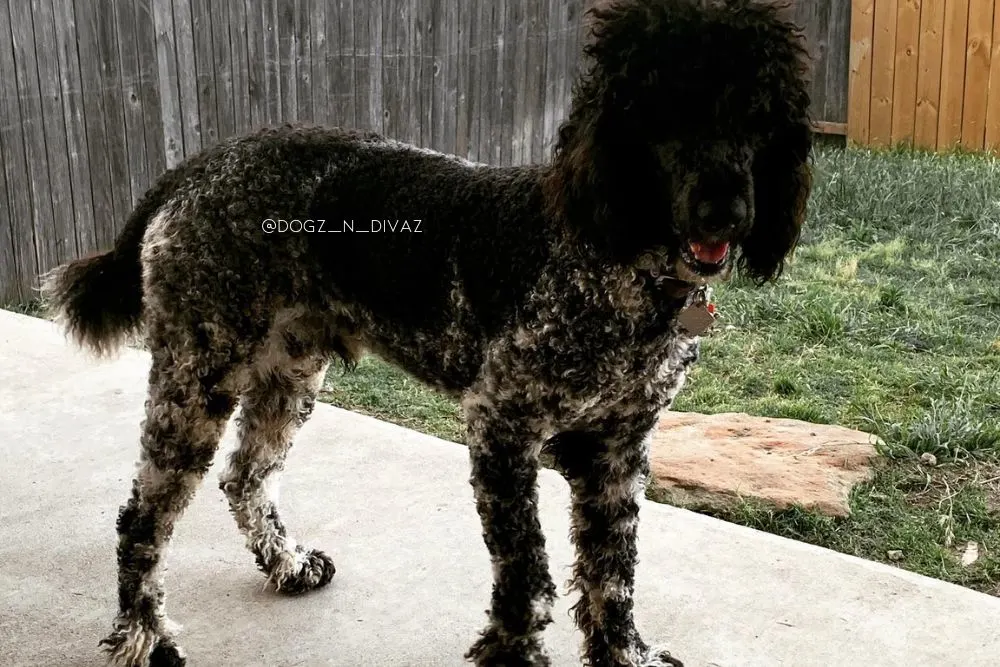
Since any dog of a particular color can have ticking, ticking is more of a “marking” than a color.
The dog has a ticking, which has little colored dots all over it. It is very similar to the patterns in the dogs used for herding.
Identifying a Poodle puppy’s ticking can be challenging because they are more of a marking than a color in and of themselves. It can be more common on parts Poodles than solid colors, and as the puppy gets older, it’s more noticeable.
Although the American Kennel Club (AKC) disqualifies Poodles who exhibit ticking from conformation classes, the United Kennel Club considers it acceptable.
In their opinion, both color patterns do not adhere to the breed standard, which states that the coat should have “an even and solid color at the skin.”
Parti Poodle

Parti Poodles are arguably the most well-liked multicolored poodle breed on the market. The word “parti” actually means “particularly” colored.
A dog with uneven patches of another color on top of a white is called a Parti Poodle. Within the poodle family, parti poodles can have any color or pattern.
There are Brindle Partis, Sable Partis, and so forth.
Phantom Poodle
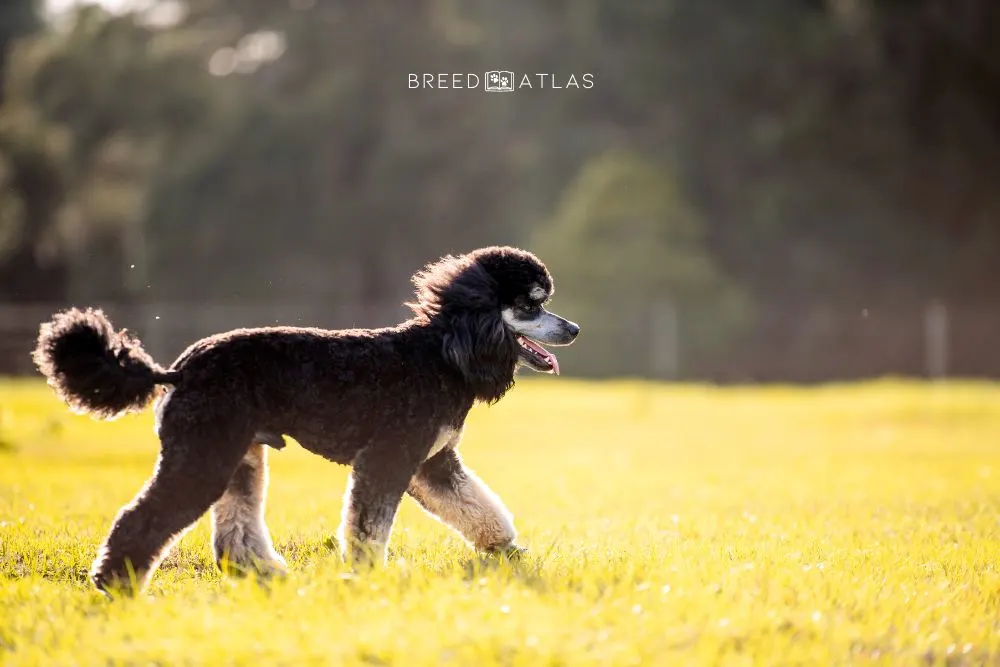
Phantom coloring is just Another Parti pattern color dog.
A dog with phantom coloration has parts of one primary color and has some specific areas colored differently. This color pattern is the same as that of a Rottweiler, Dachshund, or Doberman.
Phantoms can appear in any hue: a black Phantom with Tan Points, a Silver Phantom with White Points, a Chocolate Phantom with Cream Points, and so on.
Tuxedo Poodle
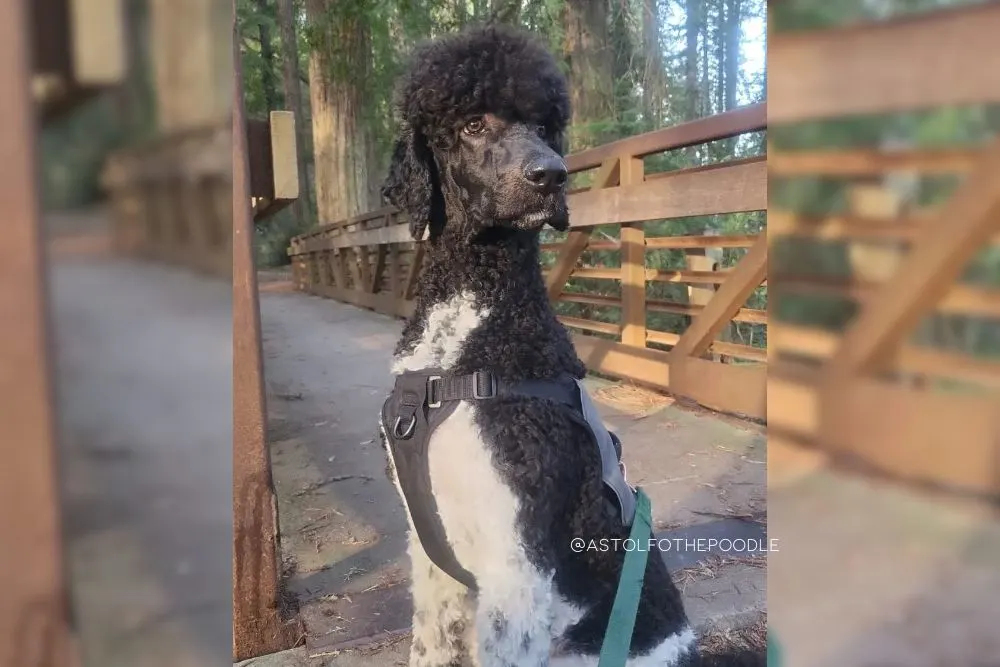
Moreover, a tuxedo is more of a color “scheme.” Parti Poodle Coloring comes in the form of a Tuxedo. The ‘blanket’ or saddle of color over the back is a hallmark of Tuxedo Parti Poodles.
White streaks go down the neck, over the chest and abdomen, across the underside of the tail, and down the inner and outside of the legs. You can have any color Tuxedo.
Mismark or Abstract Poodle
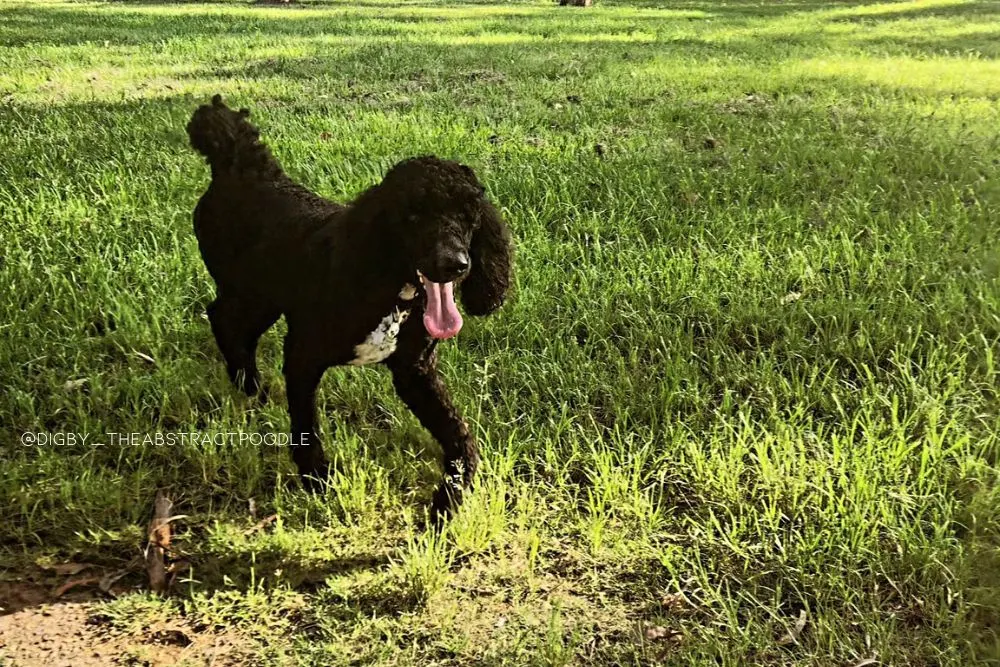
Any color of poodle can have ‘mismarks’ or abstracts. They termed this color “mismark” or “abstract” because it is too white to be classified as a Solid but not enough white to be classified as a Parti.
It is a dog of any color with irregular white spots; its background color is not white.
Which Poodle Colors Did You Like The Most?
By looking at all of these wonderful Poodle colors, I hope you have learned some new things about them and decided which is best for you.
Dark blue, pure white, red, cafe au lait – whichever you decide to be your favorite, taking a little time to learn about them will greatly help you!
Read next: The 29 Best Poodle Haircuts You Will Ever Come Across
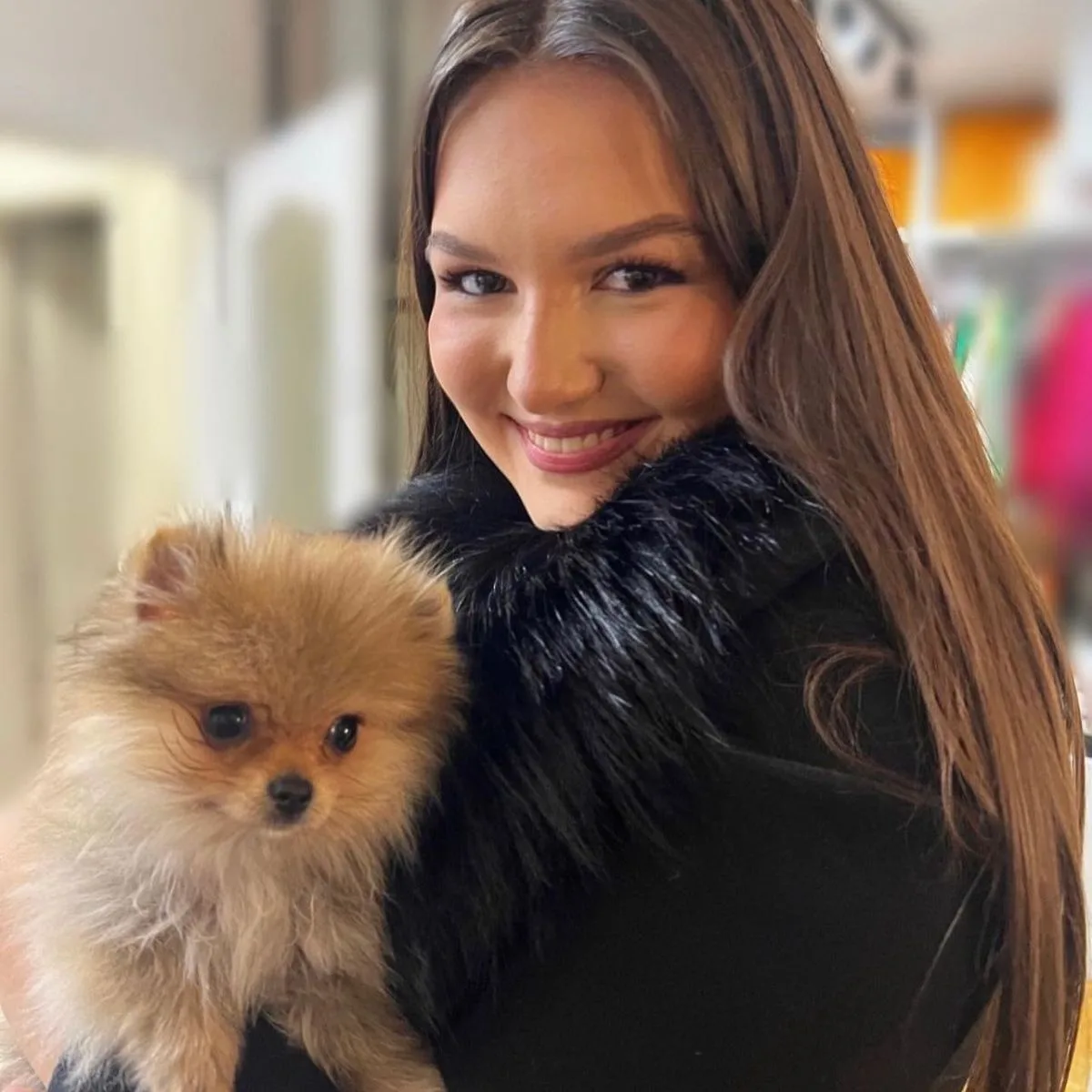
Zerina is an experienced content writer who found her passion for writing while pursuing her degree in English language and literature.
Growing up with a beloved dog as her companion, Zerina developed love for canines from a young age. Inspired by her bond with her furry friend, she decided to combine her writing skills with her love for dogs.
